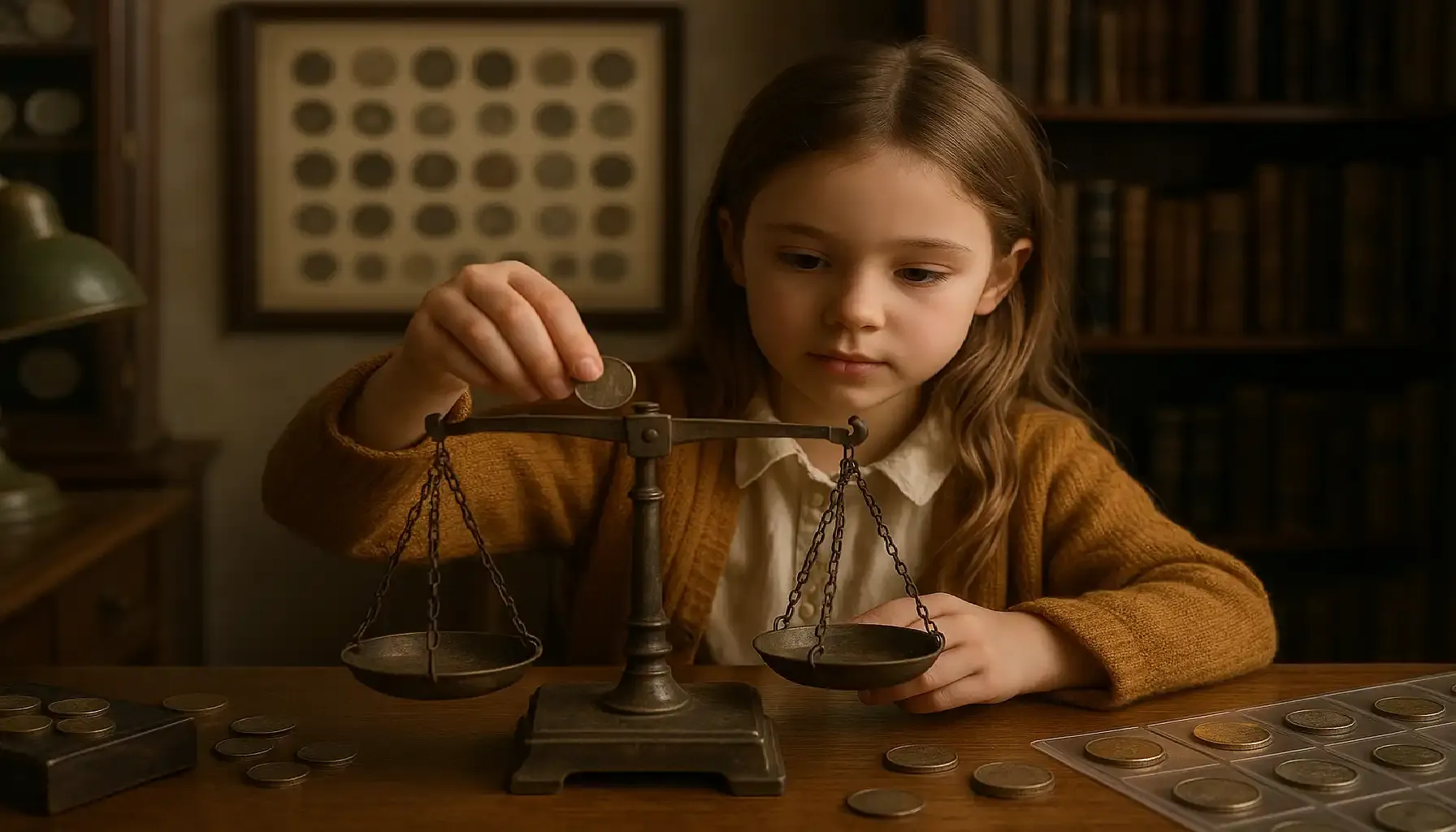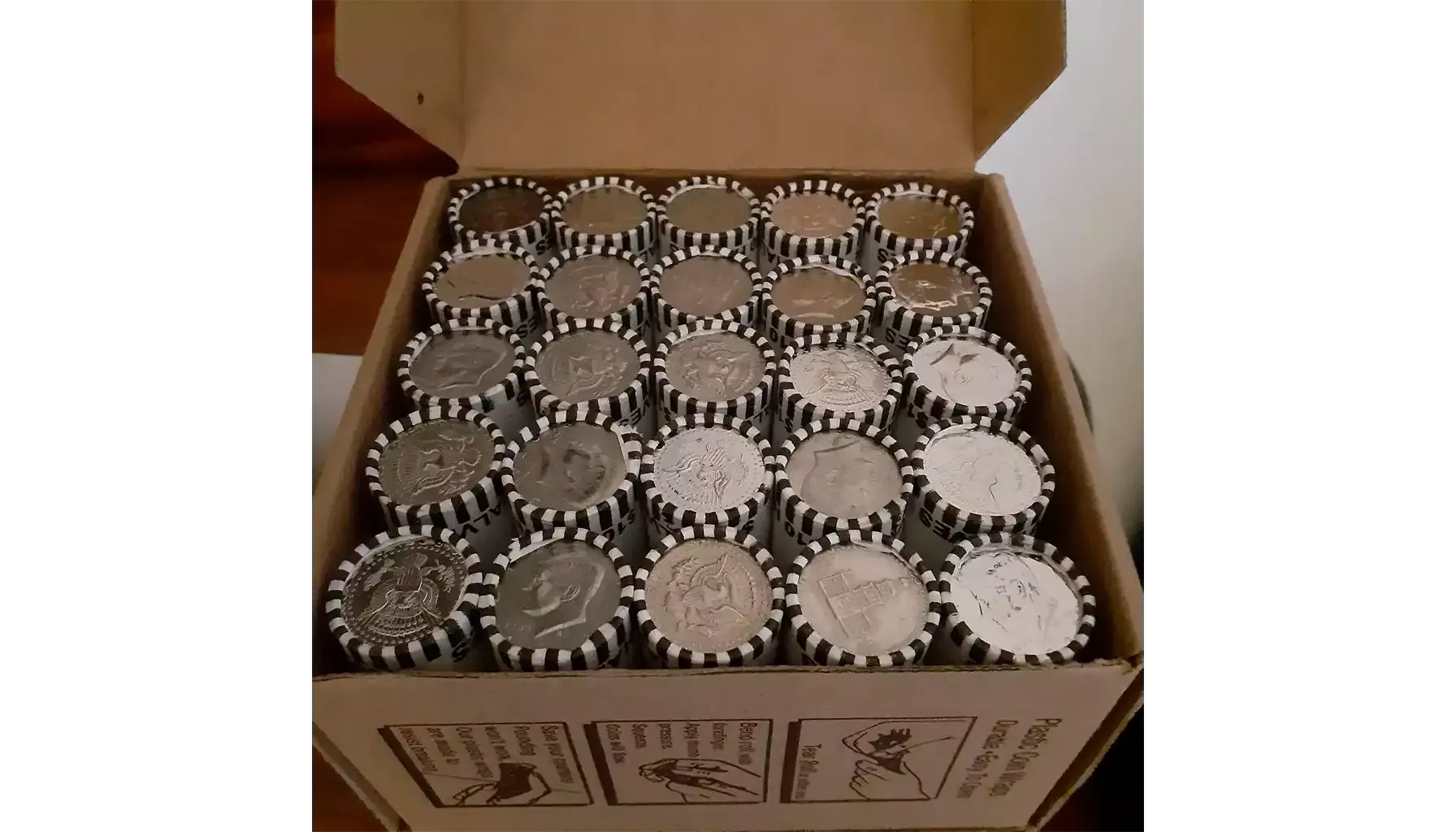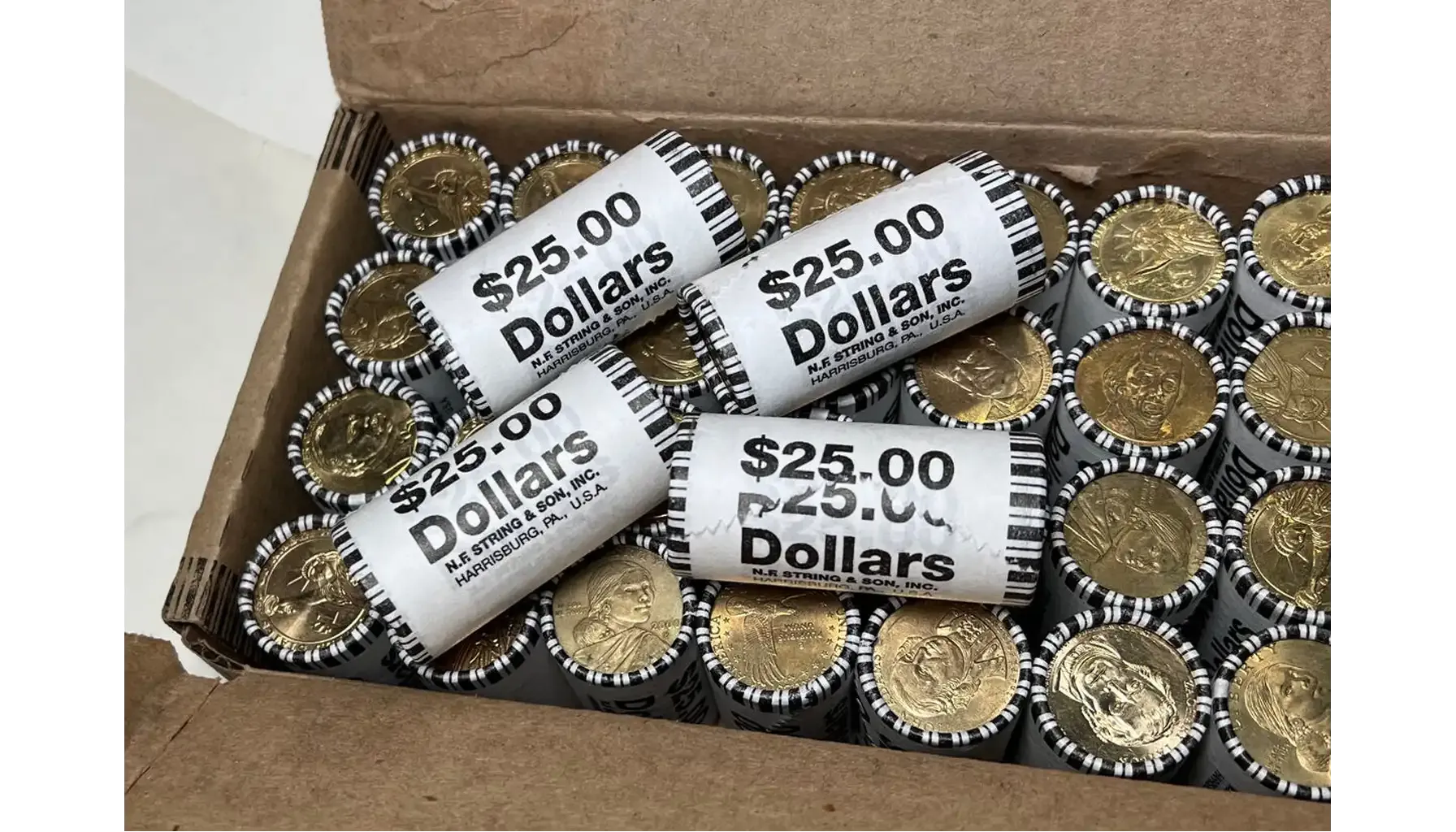Contents:
Coin roll wrappers come in many shapes and coin contents.
Penny, nickel, dime, quarter & half-dollar rolls overview in this article. Rare coin roll hunting guide included!
If you are a big collector, check the best way to check collector coins for value.
Coin Roll History
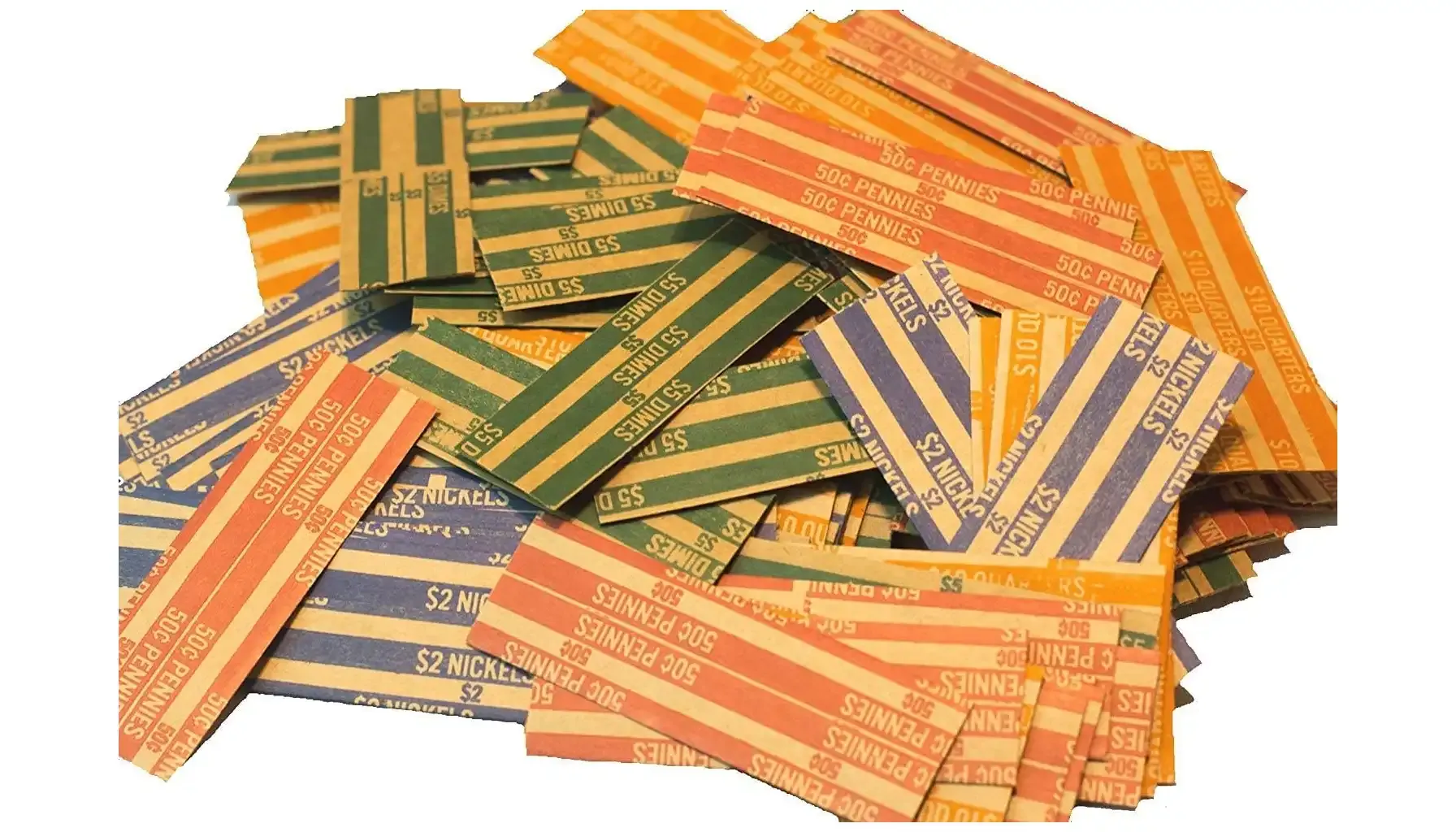
Before the 19th Century, people stored their bits in bags, jars, or boxes. Merchants, banks, and governments relied on manual counting and weighing.
In the 19th Century, the U.S. banks and mints started bundling bits in paper wrappers for easy distribution and verification. People figured out how to use coin rolls.
The automation of the wrapping process in the late 19th and early 20th centuries revolutionized how the pieces were now handled. These machines could wrap a bit by themselves and let people rest.
The Mid-20th Century brought standardization to the coin rolls amount. Now a wrapper had to have a determined number of bits in it.
Plastic tubes have become a common reusable alternative to paper coin rolls. Especially for collectors and investors.
Bank packaging is totally automated today and taken for granted.
Penny Roll Overview
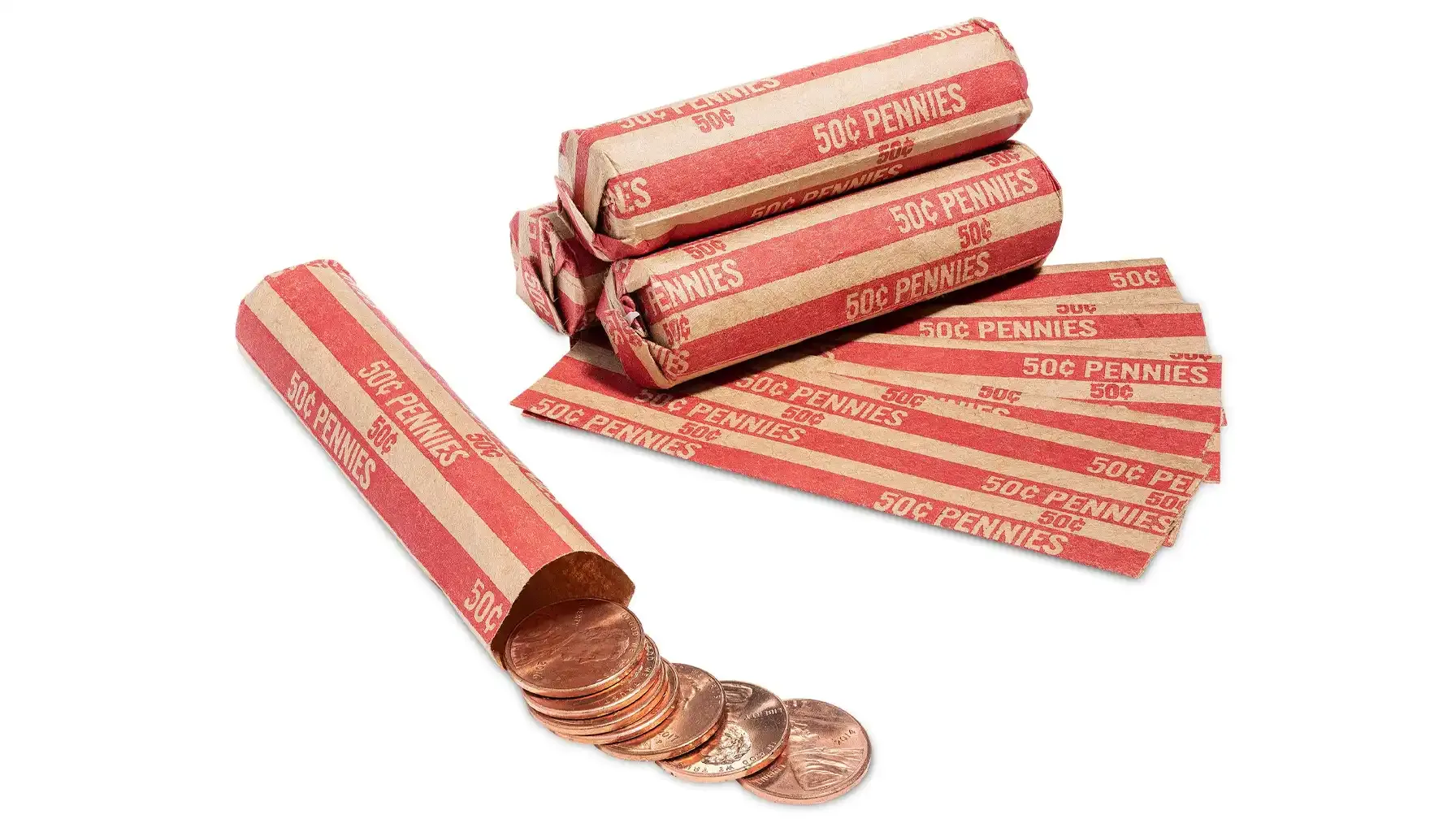
Counts: 50 pennies.
Face value: $0.01 × 50 = $0.50 per wrap.
Weight: 2.5 g × 50 = 125 grams.
The paper wrappers are color-assigned depending on the type of piece. Red ones are for pennies.
Nickel Roll Overview
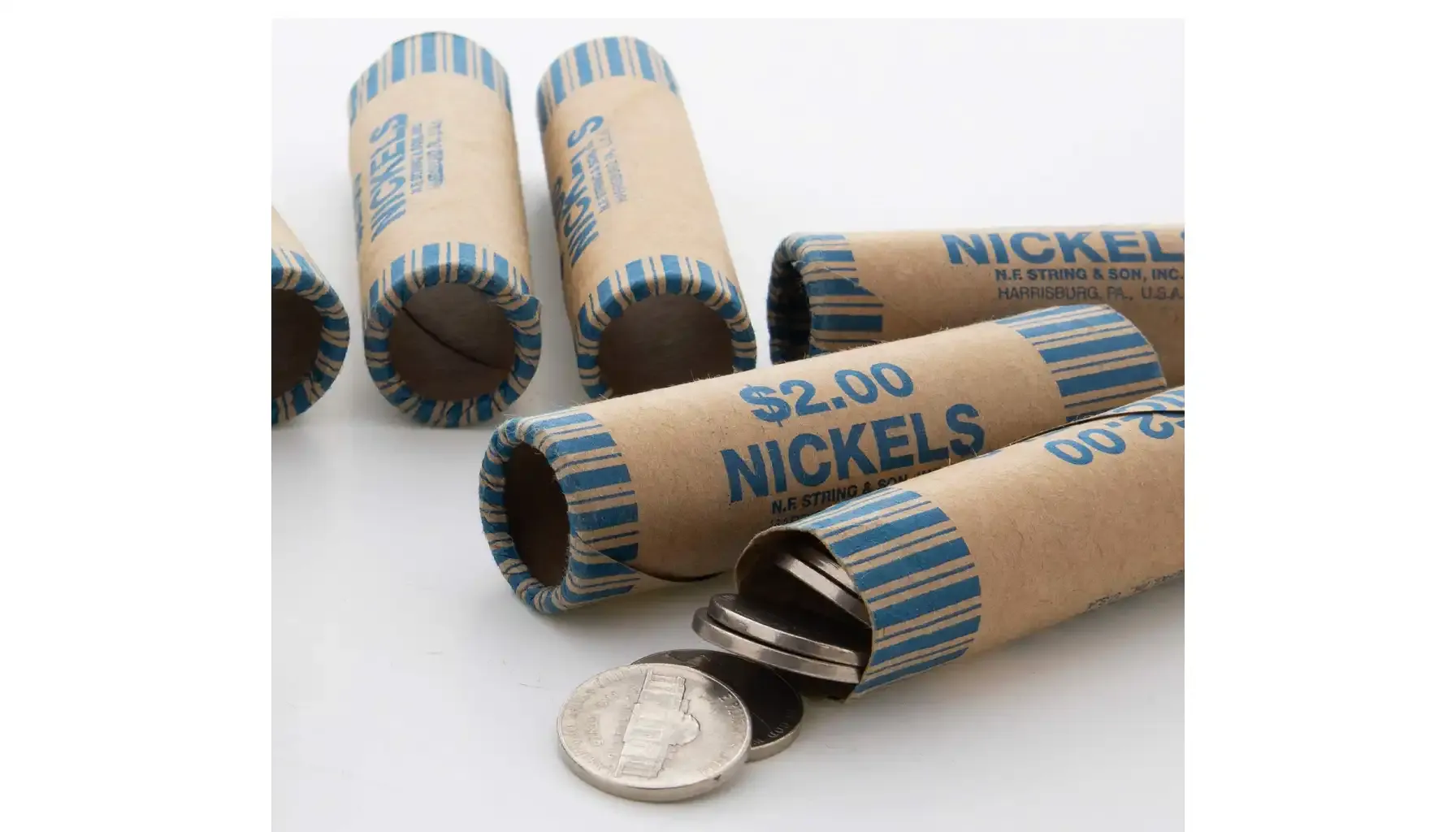
Counts: 40 nickels.
Face value: $0.05 × 40 = $2.00 per wrap.
Weight: 5 g × 40 = 200 grams.
Nickel wrappers are blue.
Dime Roll Overview
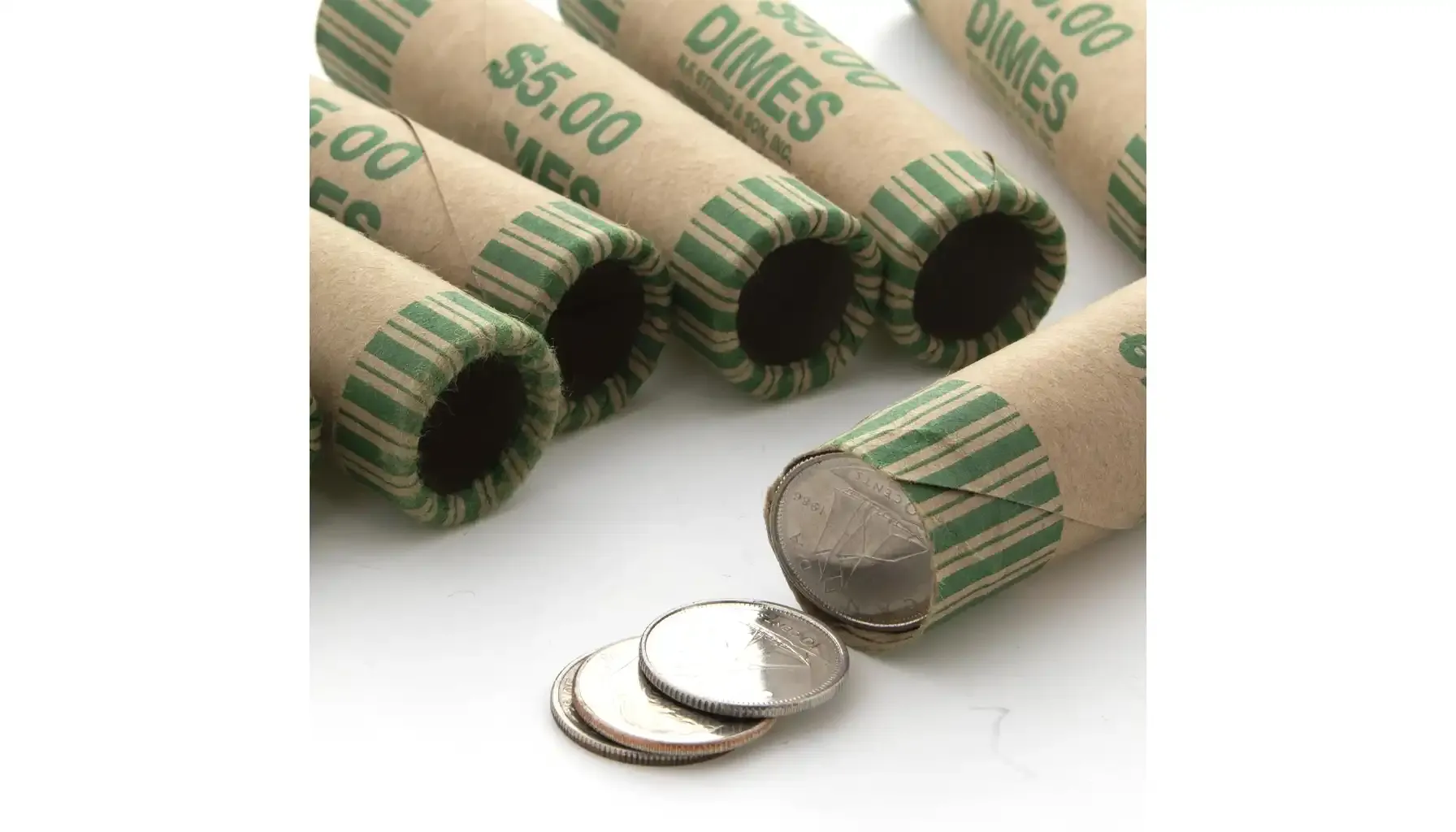
Counts: 50 dimes.
Face value: $0.10 × 50 = $5 per wrap.
Weight: 2.2 g × 50 = 113 grams.
Dime coin paper rolls are green.
Quarter Roll Overview
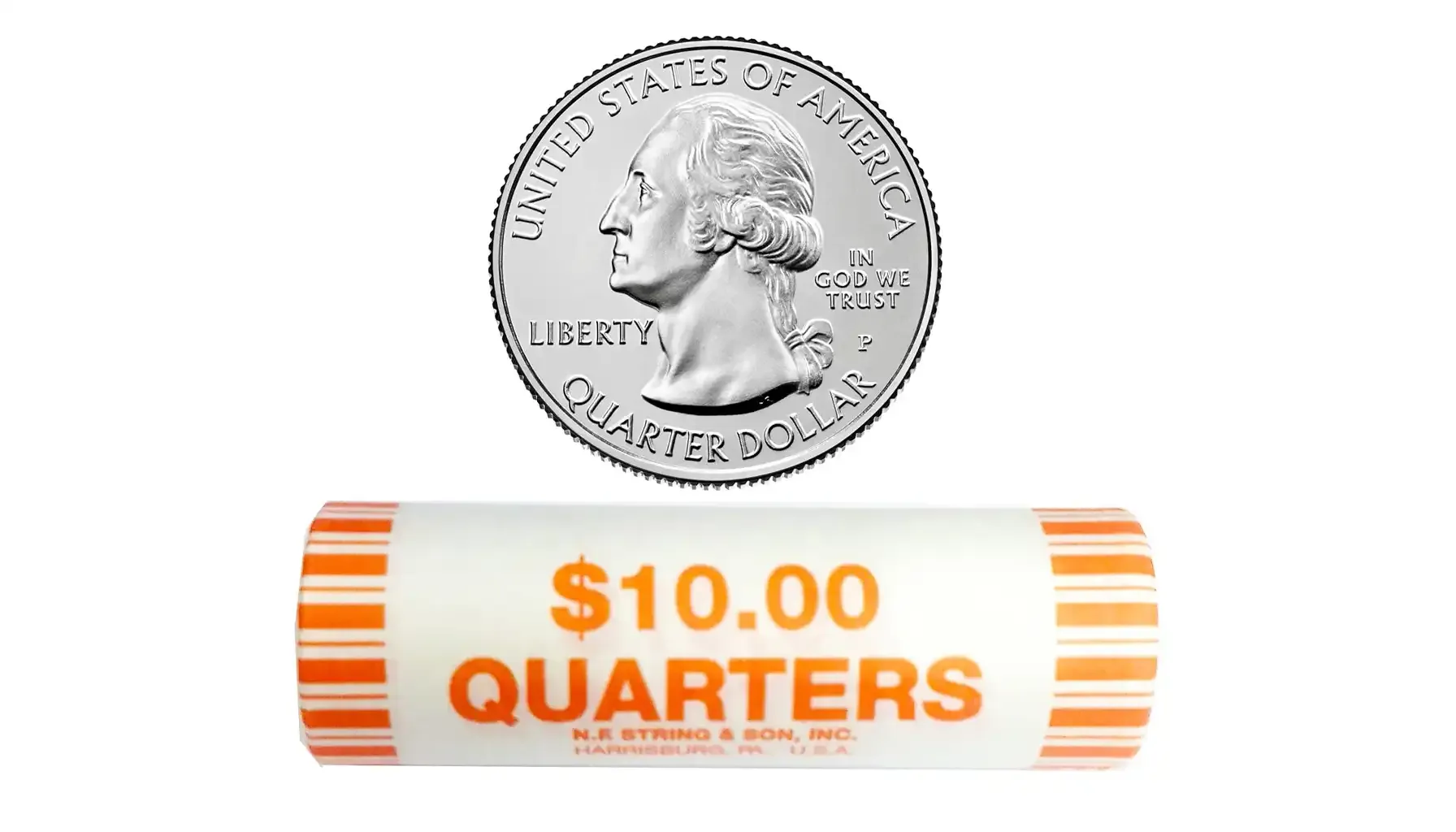
Counts: 40 quarters.
Face value: $0.25 × 40 = $10 per wrap.
Weight: 2.67 g × 50 = 226 grams.
Quarter rolls have an orange colour mark.
Half Dollar Roll Overview
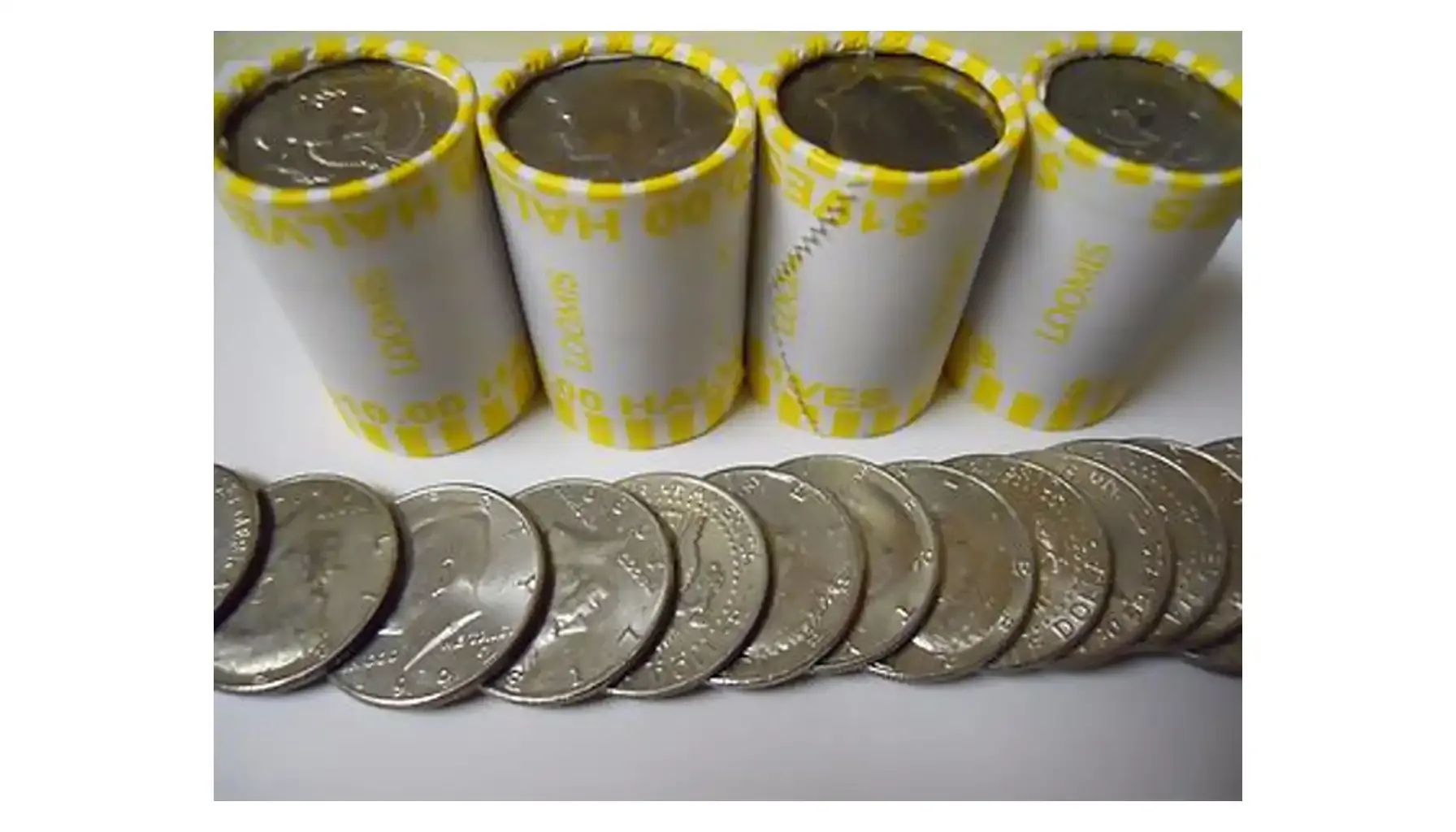
Counts: 20 half dollars.
Face value: $0.5 × 20 = $10 per wrap.
Weight: 11.34 g × 20 = 226 grams.
Half-dollar wrappers are yellow.
Coin Roll Chart
Here’s a little general chart with coin roll amounts and other data.
Package denominations | Bits in a package | Face Value | Modern Weight |
Penny (1¢) | 50 | $0.50 | 125 g (2.5 g each) |
Nickel (5¢) | 40 | $2.00 | 200 g (5.0 g each) |
Dime (10¢) | 50 | $5.00 | 113 g (2.268 g each) |
Quarter (25¢) | 40 | $10.00 | 226 g (5.67 g each) |
Half Dollar (50¢) | 20 | $10.00 | 226 g (11.34 g each) |
The price may depend on many factors, and the rarity of the piece is among them.
How to Spot Rare Rolls
Here’s a little guide to help you identify wraps with precious bits. You might need collectors’ tools like a Magnifying loupe (10x), a digital scale, a flashlight, and gloves (for BU/proof pieces).
1. Understand What Makes it “Rare”. Rare packages often include:
Key Dates Editions: Bits with low mintages or high collector demand.
Error Coins: Bits with die cracks, off-centers, double dies, etc.
Uncirculated or BU Coins: Brilliant uncirculated wrappers, especially older ones.
Proof Pieces: Occasionally found in circulation or special sets.
2. Inspect the End Coins ("Enders"). Before opening, look at both ends of the roll:
Mintmarks: “D” or “S” mint marks can indicate lower mintages.
Unusual Color or Shine: Brilliant luster suggests uncirculated piecesinside.
3. Analyze the Wrapping Style:
Original Bank-Wrapped packages typically have a uniform crimp and vintage paper. These are more likely to contain untouched pieces.
4. Weigh the package. Use a digital scale:
Rolls containing silver or copper bits will weigh slightly more than modern clad pieces.
If the package is too light, it could be a counterfeit.
5. Use a Flashlight to “Peek”. Hold a flashlight to the edge of a paper wrap to reveal the pieces inside the unsearched coin rolls. You might see:
Matching luster (all BU bits).
Old dates.
6. Look for Dealer Labels or Mint Seals. Some rare wraps come with:
U.S. Mint seals (on proof or special releases).
Dealer labels like “BU 1955-D Lincoln Cent Roll”.
7. Watch for Rare Errors. Packages may contain pieces with:
Double dies.
Off-center strikes.
Blank planchets.
All in all, look for valuable pieces and know how to identify valuable coins.

Coin ID Scanner
Coin ID Scanner scans your coins and shares their numismatic data with you.
Take a photo of your piece.
The App scans it with the image recognition technology.
The Coin ID Scanner will tell the collectible’s country, denomination, and value.
You can then store this piece in your new online collection.
Coin ID Scanner also provides:
An AI-assistant for numismatic questions.
A big database (150.000 entries!)
Blogs with overviews, dealership guides, and news.
FAQ and Answers
Some more questions left? Let’s answer them.
Where to Get Wrappers?
You can get one from the bank or buy from a website! Auctions are also a safe way to find collectibles for sale.
How to Fold Coin Rolls?
Depends on the material. For the paper wraps, fold the bottom and then the top edges over the bits. For the plastic ones, you need to pinch the end to close it.
If you wonder how to close the wrappers, the answer is the same.

